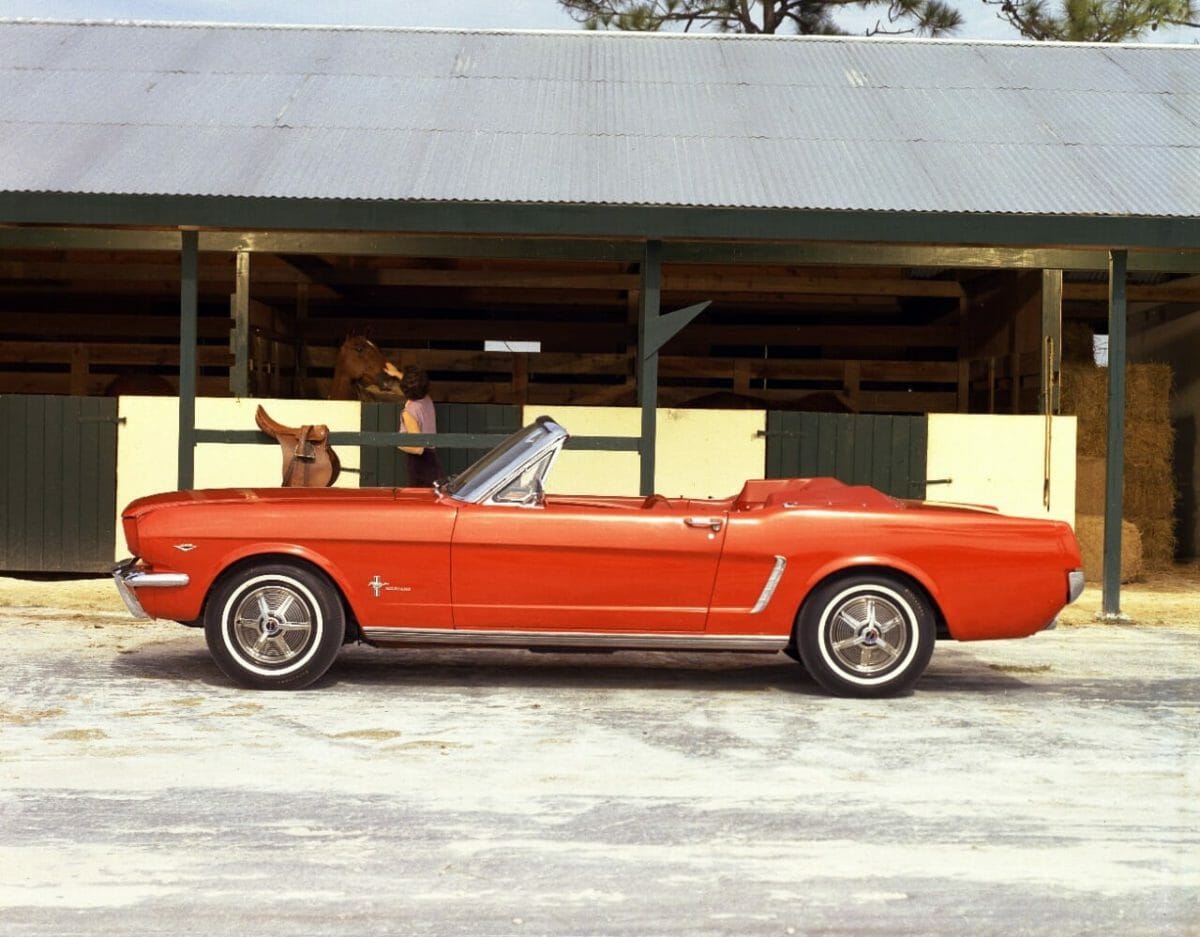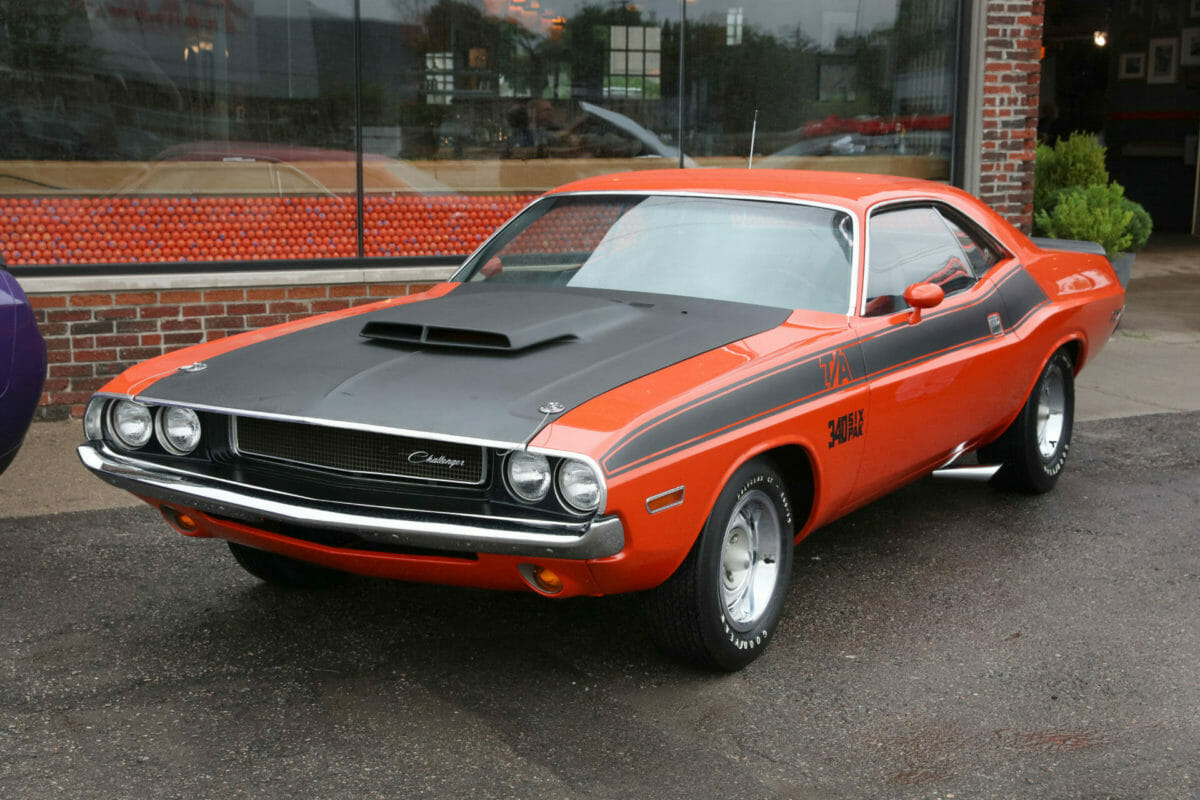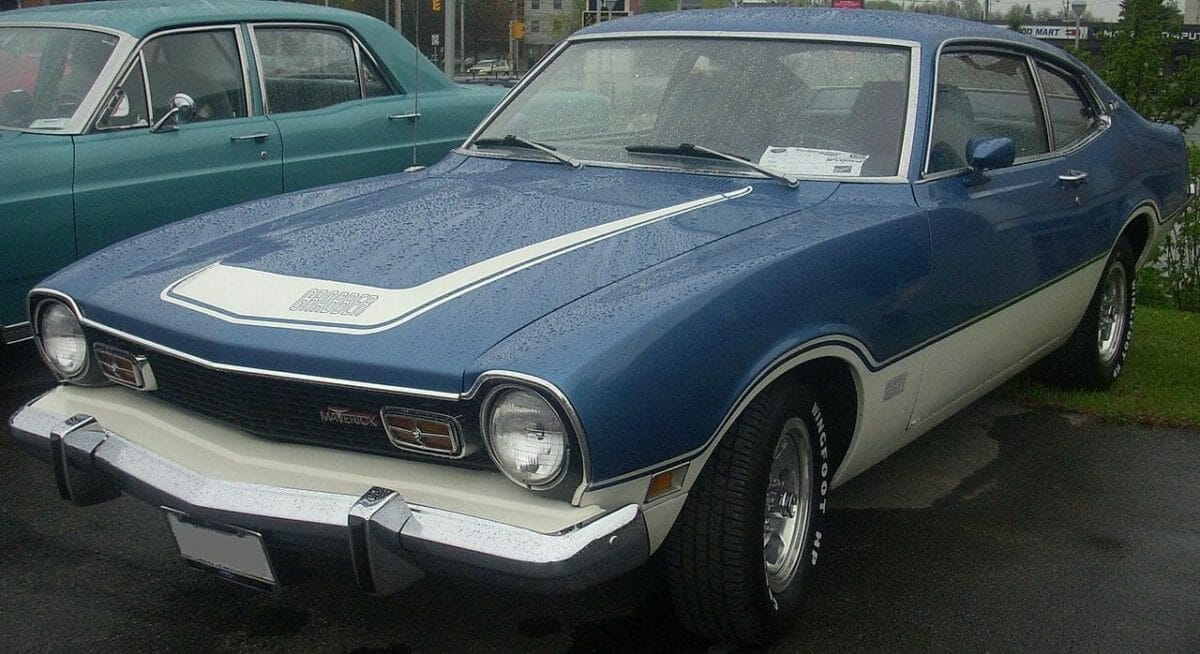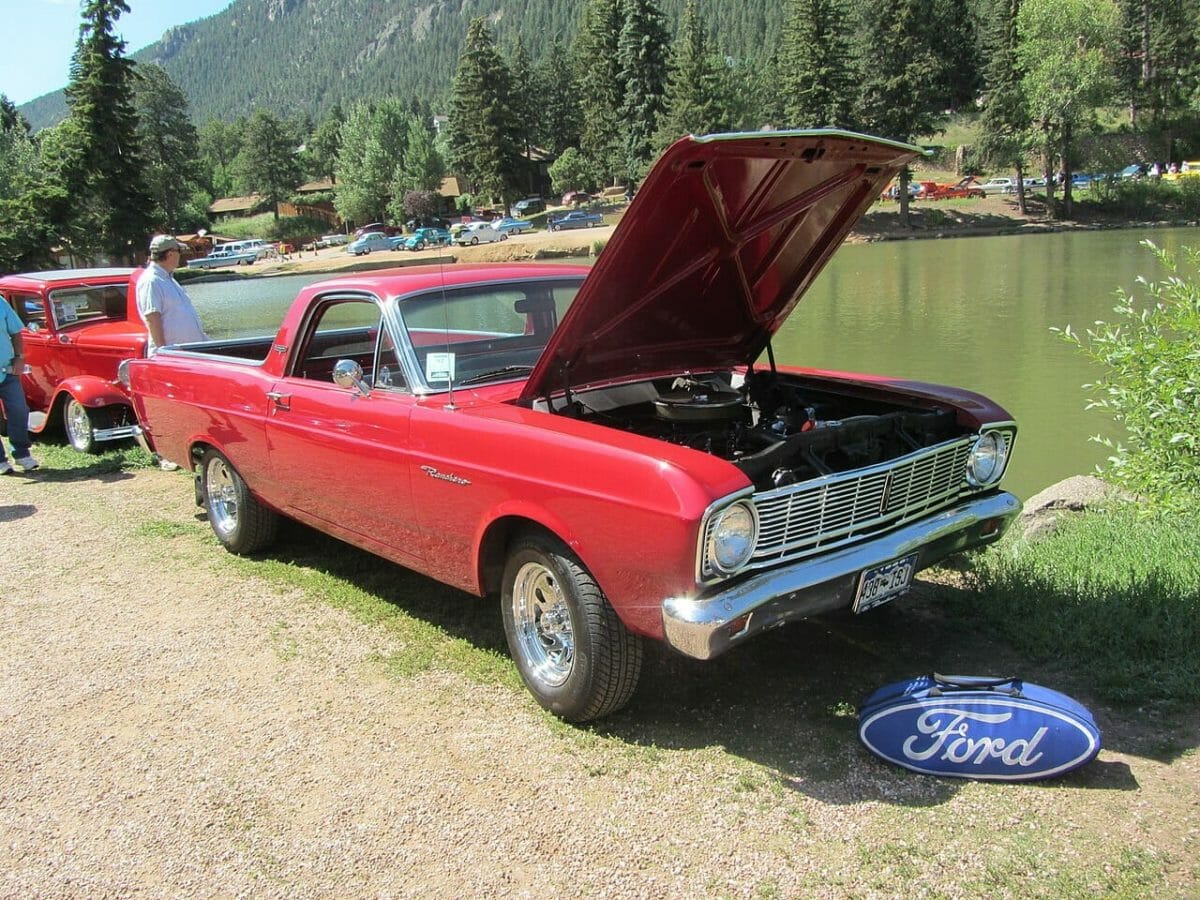Are 2003 Ford Mustangs Easy to Work on
7 Classic Muscle Cars that Are Easy to Restore
Restoring cars is easier if you're mechanically savvy. But with research, planning, and smart shopping, even a novice can affordably rebuild their own piece of American muscle.

Okay, so you've been binge-watching shows likeRust Valley Restorers, and you can't help but notice that those classic Chevy Chevelles and new Dodge Chargers sure look nice. And now you're ready to try your hand at restoring a classic car.
Before you jump in with both feet… go back and re-watch a few episodes, but this time, make a note of how often their expenses spiral out of control. Because it happens almost every week.
Or think back to your first car, something you were able to buy dirt-cheap, but it wound up costing so much just to keep it running that you might as well have bought a new set of wheels and made the payments on it.
Imagine that, but you can't just make a trip to the nearest auto parts store, you have to hit up junkyards and auction sites, and more often than not, it's going to be the seller setting the price, because they know you can't find this piece anywhere else.
There's always a chance you could get lucky. You pick up an old Roadrunner that someone inherited, and it's got just about everything you need except for a few spark plugs and a fresh set of tires. Sure, that happens. People also win the lottery now and then, but that doesn't make it a good investment.
Now, we're talking to the millionaires here, too. You may think you've got a nice little bit of cash saved up for this project, but the costs will mount up faster than you realize. You're looking at somewhere in the range of fifty, sixty grand on average, and the final tally could be five times that for particularly challenging or rare projects.
You could buy a small house in California, or a mansion in Georgia, for what you'd spend buying a Plymouth Superbird and getting it back on the road.
We're not sayingdon't do it,we're saying pick your first project very carefully. If you want to make a career out of it, flipping one car at a time and selling it off to someone with a Jay Leno-sized garage, then you can get more ambitious as you go.
For now, you're looking for something that you can put together without dipping into the retirement fund. Here are some of our picks:

1965 Ford Mustang
Classic Mustangs are fairly commonplace, you're going to see dozens of them at every car show because they're some of the easiest muscle cars to restore. There are some exceptions, like the 1971 Boss 351, a rare collector's piece with fewer than 2,000 ever rolling off the factory line.
But for the most part, early Mustangs are easy enough to find, the parts are affordable enough to replace, and before the sleek, sporty redesign in 1979, they look and feel like classic American muscle cars.
You're going to find 1965-1970 Mustangs on every list like this, usually near the top, as seen on theMotor Biscuit list. This is mainly because they're still makin'em. Or rather, they're still reproducing the parts.
Go on the Ford parts site and see for yourself. You'll probably be able to scrounge up enough parts to build it one-piece-at-a-time, Johnny Cash-style if it comes to that.
The accessibility of the parts has led to the first-generation Mustang being one of the most popular restoration projects, which in turn has led to the Mustang having one of the biggest restoration communities. That means that you're going to have experienced Mustang fans helping you out every step of the way, from picking out a solid project car to replacing the timing chain without losing a finger.
Start with the Mustang subreddit, which boasts nearly 100,000 members. And don't worry about being a noob, because if there's one thing Ford-faithfuls love, it's finding new members for the congregation.
The combination of popularity and accessibility goes for most Ford vehicles, and you'll see the automaker pop up on this list again. We're putting the first-generation Mustang at number one because it's the restoration community's favorite. The fact that almost every other list puts the Mustang at number one only proves our point.
- Engine: 4.7L HiPo V8
- Horsepower: 271 hp
- Torque: 312 lb.-ft.
- 0-60: Nine seconds

1970 Dodge Challenger
You were probably hoping to see a Challenger or a Charger on the list, right? Well good news, here it is! This is another one that appears on just about everyone's easy-muscle-cars list, and it's another one that's just about impossible for us to disagree with.
While Dodge parts are not always as readily available as Ford parts, they're not the hardest to find, and the early-1970s Challengers used many of the same components as the Plymouth Barracuda, meaning that you've got twice as many cars to pull from when you visit the junkyard.
As with the Mustang, the Challenger's popularity goes a long way. There are plenty of communities devoted to fixing up classic Dodges, there's a big market for replacement parts, and anything you need to do to get it road-worthy, you can find a YouTube guide taking you through it step by step.
In fact, this was one of the easiest cars to restore even before high-speed internet and YouTube came along and taught everybody how to do everything. There are a lot of great books on the subject that still serve as comprehensive, critical references for Dodge restorers.
- Engine: 7.2L Hemi V8
- Horsepower: 390 hp
- Torque: 425 lb.-ft.
- 0-60: Six seconds

2003 Mercury Marauder
Okay, this one's sort of a wild-card pick, but it's nearly twenty years old. If you were calling late-seventies Fords classics in the nineties, you can call a 2003 Marauder a classic today.
And if you'd rather not stretch the term like that, look, the 4.2L V8 engine on this thing kicks out a hefty 302 horsepower, so it's worth making an exception just this once.
We're recommending the Marauder for three big reasons. First, if you want something unique, but affordable, this is it. This was the first Marauder since the 1970s, but it's a completely different car than that one, and it was discontinued after 2004. If you want to stand out at the car show, but you don't want to spend your retirement fund on it, the Marauder will do the trick.
Second, if this is your first restoration project, starting with something newer is a great way to give yourself a head start. It's going to be easier to find a 2003 car with under 250k miles on it, it's going to be easier to find donor cars in good condition, and if you're more familiar with cars made after 1990, it'll be easier for you to tinker on a 2003 than a 1970.
Finally, the price. You can find a 2003 Marauder in decent condition for under a grand. It's in that weird space of being not quite new enough for your average buyer, and not quite old enough for the collector, so this is the best time to buy.
But despite that low price, the Marauder is somewhat rare. It's just that car collectors haven't caught on yet, so the car is still pretty cheap. But it won't stay that way. If you missed out on Microsoft stock back in the day, if you missed out on being an early Bitcoin investor, don't miss out on this "new" classic while it's still selling at a junker price.
- Engine:4.6L V8
- Horsepower: 302 hp
- Torque: 318 lb.-ft.
- 0-60: 7.7 seconds

1970 El Camino
As with the early Mustang, the El Camino is a popular car with easy-to-find parts. You can find plenty of online shops devoted entirely to selling classic Chevy parts. Classic El Caminos are easy to find complete and in working order at well under $10,000, so you should be able to buy a fixer-upper at a very fair price.
The El Camino is fairly commonplace. After Mustangs, these might be the most common car at shows and meet-ups. There's a lot to be said for unique styling if you want your car to stand out from the pack, but it's still gonna look like an El Camino.
If that's not really a problem for you, then don't worry about it. It's still fun to drive, and that's the most important thing at the end of the day. It's just not exactly a hidden gem or an underrated cult classic.
- Engine: 7.4L V8
- Horsepower: 350 hp
- Torque: 415 lb.-ft.
- 0-60: 7.6 seconds

1975 Maverick Grabber
At 122 horsepower you may be wondering what a 1975 Maverick Grabber is doing on this list, but it's an honest-to-god V8, and that 122 horsepower goes a long way in what was one of the early compact cars.
The Grabber was Ford's attempt at creating an entry-level performance model. If we're being realistic, this thing ain't beating a Mustang on the quarter-mile. But it's a zippy little compact with some real oomph to it, and potentially the most fun-to-drive car on this list if you like a lot of power in a tiny package.
A fully restored Grabber can go for close to $100k, while your basic junker may start at under five grand. Add in the availability of Ford parts, and this might be the most profitable restoration project for those looking to earn some money on the deal.
- Engine: 4.9L V8
- Horsepower: 122 hp
- Torque: 208 lb.-ft.
- 0-60: Nine seconds

1970 Mercury Cyclone
We're recommending the Cyclone if you're up for abit of a challenge, but you don't want to be overwhelmed by the sheer scope of the project. Cyclones aren't as common as Mustangs and Challengers, but they still fall under the Ford banner, so parts aren't too hard to come by, and prices start at under four grand.
If you absolutely have to have a 1970s muscle car, and you want something that stands out from all the Mustangs, Dodges, and El Caminos, the 1970 Mercury Cyclone may be just what you're after.
Consider this the best intermediate project. If you've pulled a few engines in your day, rebuilt some carbs, and you're willing to put in a little extra effort for a little extra kick, the Cyclone is an overlooked star of the quarter-mile.
- Engine: 7.0L V8
- Horsepower: 360 hp
- Torque: 460 lb.-ft.
- 0-60: 6.4 seconds

1965 Ford Ranchero
The car that inspired the El Camino. The first generation Ranchero was basically a station wagon with the back roof chopped off. The second generation was based on the compact Falcon platform, which made the new Ranchero more of a muscle car than a pickup. The closest thing Ford makes to the Ranchero today might be the Ford Ranger.
Note that this may be the priciest project on the list. The initial purchase could be as low as a few grand for something that needs a lot of work, or as much as fifty thousand for something that runs.
But it's Ford, so the availability of parts means that once you get the body in your driveway, you shouldn't have much trouble keeping expenses under control going forward.
We're putting this one on the list simply because you're gonna want to see the look on the El Camino drivers' faces when they say "What the heck is that?"
- Engine: 4.7L V8
- Horsepower: 200 hp
- Torque: 258 lb.-ft.
- 0-60: Nine seconds
Narrowing it Down
Even narrowing it down to seven, you've got a lot to choose from here. And if you've never been shopping for a classic car, you still might not know where to start.
Our advice: The easiest restoration projects are always going to be Fords. The availability of parts and the wealth of tutorials and enthusiast groups you can find online will help to keep you from giving up on the project halfway through.
Once you've got that first project under your belt, you can sell it off and put the profits, and the experience, towards that Trans Am or Corvette you've been dreaming about. But start with something manageable. Even Jimi Hendrix learnedMary Had a Little Lamb before he playedAll Along the Watchtower.
Photos: Dodge; Ford; Chevrolet; Netflix; Deposit Photos
Frequently Asked Questions
Apr 9, 2022
What is the cheapest muscle car to restore?
Many different muscle cars are out on the market these days. If you are looking to restore a classic muscle car and want to save some money there are a few good options available. The first model that you could take a look at is the 1968 through 1970 Chevy Nova. These are cheaper than a lot of the other classic cars, and they have a lot of the same parts as the more expensive muscle cars.
Another good car to take a look at would be the 1970 through 1972 Chevrolet Chevelle. This is one of the most classic muscle cars of all time and there are plenty of parts available. There is also a diehard community of Chevelle enthusiasts so finding information on how to restore components is easier.
The third car that I would recommend to try to restore if you are on a budget is the 1975 through 1981 Pontiac Trans Am. This is a muscle car that will turn a lot of heads and is very easy to work on due to the long hood. They are budget-friendly and there are plenty of parts out there for them due to the high production numbers.
What is the easiest classic car to maintain?
When you enter the world of classic cars one of the most important things to consider is the overall ease of maintenance. One of the easiest classic cars to maintain is a 1967 through 1976 fourth-generation Dodge Dart. It may not be as big as a lot of the other muscle cars, but it is inexpensive and it has a very good engine and transmission that do not require a lot of work.
If you are looking for something classic with a bit more styling then I recommend a 1954 through 1957 Chevrolet Bel Air. These are amazing-looking cars and they have very simple motors and transmissions that can be fixed easily and there are plenty of parts available for them still.
The last car that I would recommend if you want one that is easy to maintain is the Chevy Nova from 1968 and later. There were over a million of them produced over the years and they only came with two engine options meaning that they are simple to learn how to fix.
What is the most sought-after muscle car?
If you're a muscle car lover and you are looking to find the most sought-after cars in the world there are a few that stand out from the rest. All of these are up to endless debate, but they are all generally considered to be great classics.
The first car I would recommend would be an Oldsmobile 442, if you can find a Hurst Olds then that's even rarer. These are an iconic design with their large swooping rear end and they will always be a showstopper at any muscle car show.
If you're more of a Ford person then you would want to find a Shelby GT500 from the 1960s with the 428 motor in it. These are known to be some of the most desirable Mustangs of all time and have been featured in many movies. Ford even brought the GT500 name back for a 2020 Mustang model because it's so iconic.
The last one I would recommend would of course be the Chevrolet Chevelle SS. These are some of the most powerful of all the muscle cars and always turn heads when they are driving down the road.

Gilbert Smith
Gilbert Smith is a New Mexico-based automotive journalist who enjoys writing about cars, trucks, and SUVs. He is a longtime contributor to Vehicle History and a member of the site's original content team when it launched.
Source: https://www.vehiclehistory.com/articles/7-classic-muscle-cars-that-are-easy-to-restore
0 Response to "Are 2003 Ford Mustangs Easy to Work on"
Post a Comment